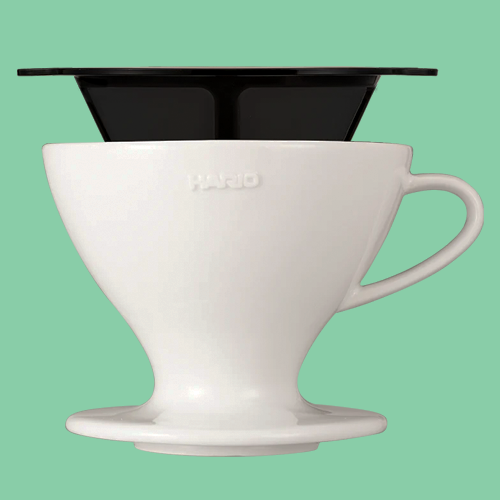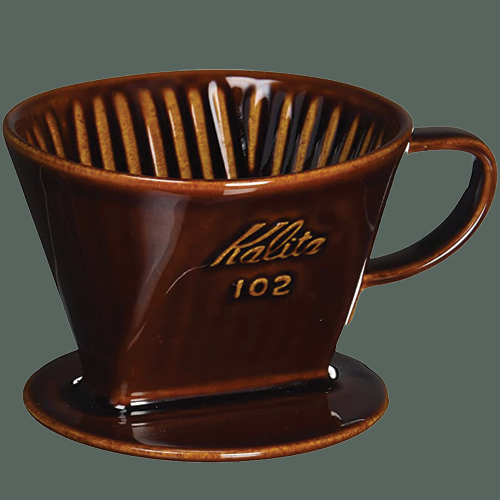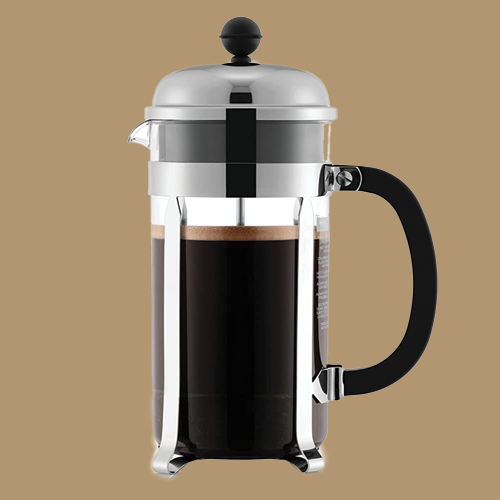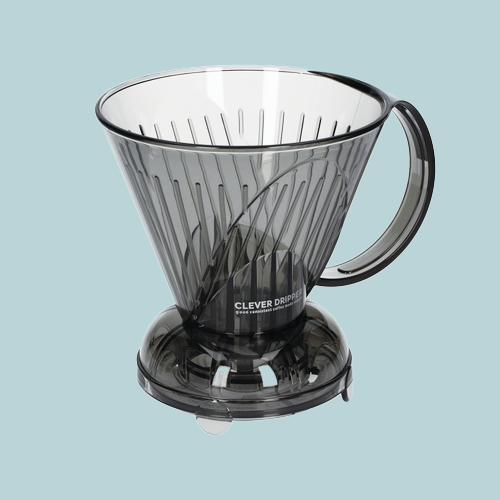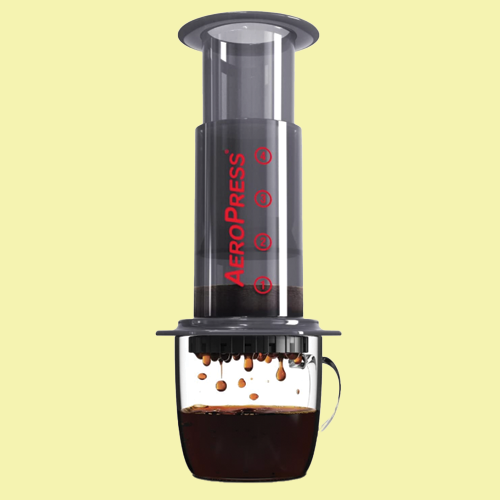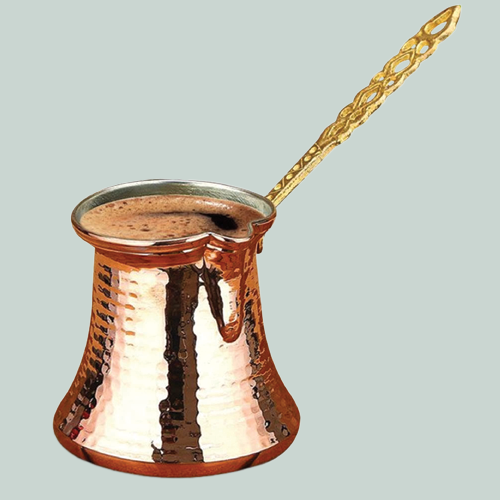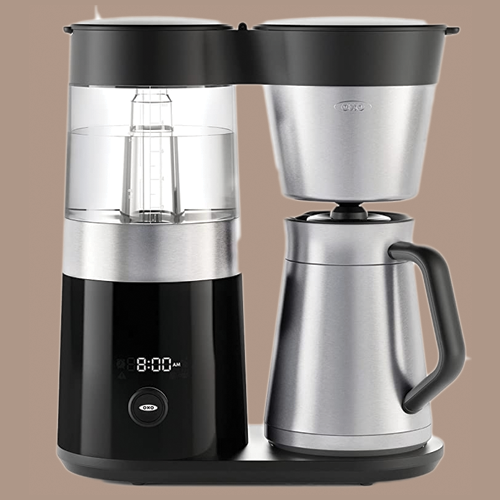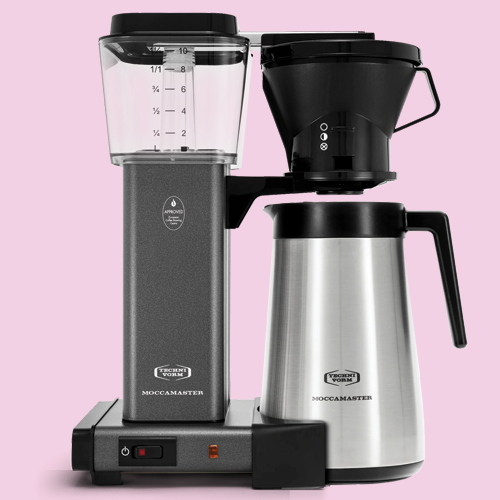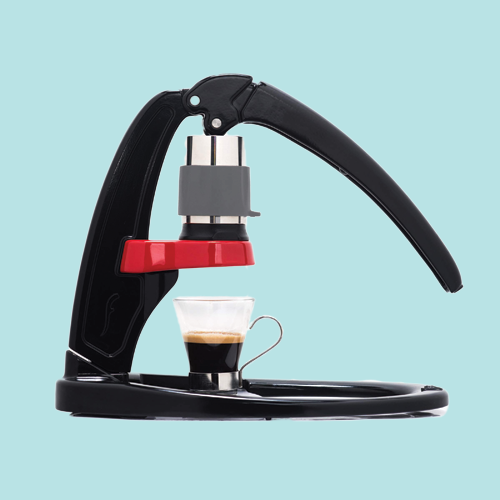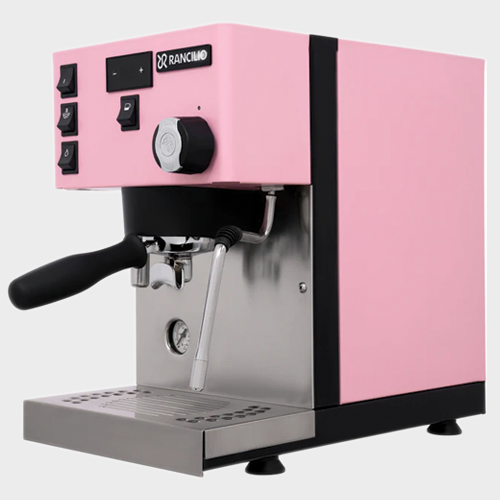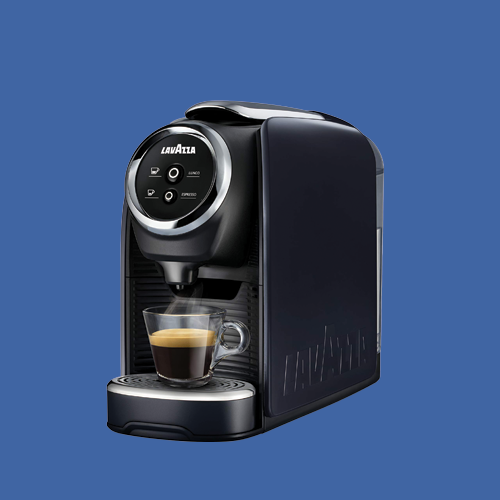The Best Coffee Brewing Equipment
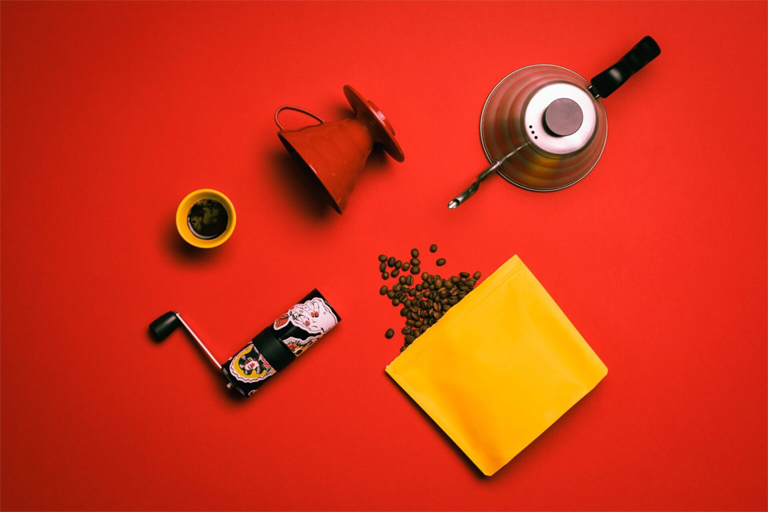
What are the different methods of brewing coffee at your home? Which coffee brewing method is the best? In order to start a day in a proper way, we’re looking for some support. Most of us, that support finds in a small or a hefty dose of caffeine.
What options do you have when you want to prepare yourself a cup of coffee from the comforts of home?
Below we’ve laid out the most important points you need to know about each of the ways of preparing your coffee at home. We hope that you’ll find the coffee brewing equipment that perfectly fits you.
Hario V60
The first one on the list of best coffee gear is Hario v60. It can be made out of ceramic or plastic.
How to use Hario v60?
You’ll need a Hario Drip Decanter, Digital Scale, Pouring Kettle, and v60 Paper Filters as well. We recommend putting 60 grams to 70 grams of coffee in 1 liter of water. So basically, if you’re preparing coffee for two people then 30 grams to 40 grams per 0,5 liter of water is gonna be enough.
If you’re using coffee beans, firstly you need to weigh them with a Digital Scale and then grind them fresh. For grinding the coffee beans you can use a Hand Burr Grinder or Electric Burr Grinder, it’s all up to you. Just keep in mind that sometimes it’s better to buy pre-ground coffee than use a bad coffee grinder.
Note that the most important part of your cup is consistency. So, your coffee won’t be even close to what you’d get in your favorite coffee shop if you are using a poor coffee grinder.
Put your Hario v60 along with Paper Filters on the Hario Drip Decanter. The next thing to do is rinse out your Paper Filter, which could help to remove any potential papery taste and it will preheat the brewer. Continue with adding some grounds easily to the center of v60.
Be aware that your water needs to be as hot as possible. Again, use your Digital Scale to weigh the water you’re adding to. The ratio should be 2 grams of water per 1 gram of coffee. Make sure that all of your ground coffee remains wet. Swirl your brewer a little bit in a circular motion. Water needs to connect with coffee and then let rest for up to 50 seconds.
Pour the rest of your hot water over the coffee, but make it slowly and gently. Take your time, it should take around 1 minute to pour the hot water. The hotter the water the brew is faster.
It takes around 3 minutes to brew a half-liter of coffee with Hario v60.
Kalita Wave
The next on the list of coffee brewing methods is Kalita Wave. It can be made from metal (stainless steel) or ceramic if you are using stainless steel Kalita Wave then opt out for a Dispersion Steel Screen as a hack for this method. It should be underneath the Kalita Wave Filter and will improve your brewing significantly.
Once you set it up it will help you with stalling issues and also with unpredictable flow rates (speed up).
Weigh your coffee beans with Digital Scale and grind your coffee. Once the coffee is ground, place your Paper Filter and rinse it.
In the first “Blooming phase”, put around 30 grams of coffee per 0,5 liter of water. The goal in this phase is to wet all coffee and wait for 50 seconds.
In the next phase known as Agitation, use your kettle again, to pour the hot water over the coffee. Keep your eye on Digital Scale, and stop until you reach 50 % of your total water weight (If your total water weight is 0,5 liter, stop at 0.25 liter).
For the last half of the brew, you should use Gabi Dripmaster B (Gabi Dripmaster B disperses the water and turns the water into small droplets) which needs to be placed at the top of your brewer. In this Percolation phase, pour the water to fill the inner and outer reservoir of the Dripmaster.
Top it up every few seconds until you reach your targeted weight (in this case 0.25 liter). This method requires up to 4 minutes of brewing time.
Chemex
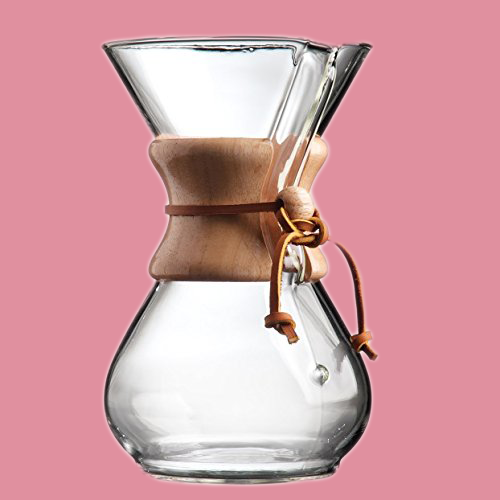
The inventor of Chemex was born in Germany, Dr. Peter Schlumbohm. He patented 300 other different kinds of items as well but particularly this one is the most successful. Dr. Peter patented Chemex in 1941 and it was released and produced in 1942 by Chemex Corporation.
The design of this coffee brewing method is quite simple, basically, it is just a single piece of glass with a wooden collar and a tie. Through the years people formed a kind of emotional attachment to this product and of course, to the coffee that it makes.
You’ll notice a nicely done channel on your Chemex, that runs down into the base. The purpose of the channel is not just to pour correctly but to allow air out of the base section during a brew.
Chemex paper should be placed in a way that the thick side of the paper is where the channel is, the air gap. In that way, the paper is less likely to collapse or form a seal. To avoid paper lock and paper stickiness to the glass, you can place a stainless steel chopstick in the brewer. Otherwise, you should be mindful of the gap, and make sure it doesn’t close.
The weight of your paper has an impact on the final taste of your coffee. The thicker the paper the cleaner the taste profile can be.
It takes around 4 minutes of brewing time to brew a half-liter of coffee with this method.
How to clean Chemex? After you separate the wooden handle, start with warm water and soap. With gentle circle motion swirl around for a minute or two. Rinse with warm water to clean all residues.
French Press
Probably the most popular coffee brewing method and the most used coffee brewer in the world. French Press is easy to use, it has 2 parts, a jar and a plunger with metal or plastic mesh. Flavors are more mixed and less transparent compared to a pour-over coffee because the filter mesh doesn’t collect all the tiny particles as the paper filter does.
A little bit of patience is required while using this technique. For the best results, you have to grind it fresh. It is recommended to add 60 – 70 grams of coffee per liter, but it is all up to you.
Well, if you wanna be precise and still try to find a dose that perfectly fits your needs then the Digital Scale is all you need.
Firstly, add around 30 grams of coffee and pour the 0,5 liter of boiling water all over it. The next thing you have to do is just let it sit for 5 minutes.
The longer you leave it the better it’s gonna taste. When your coffee is ready, put the plunger in and let it sit on the surface of the coffee.
So, the plunger serves you like a strainer. Pour the coffee into a cup and that’s it.
Generally speaking, pouring is simple but cleaning is a difficult part of the French Press technique. This is not for you if you prefer coffee to be ready in less than a minute.
Clever Dripper
Clever Dripper is a coffee brewer made out of plastic. In this method, coffee is firstly soaked in hot water, after that, you simply put your Clever Dripper on the glass and water starts to pass through. How to brew with Clever Dripper?
Put your Paper Filter inside the Clever Dripper. After you’ve boiled water, we recommend filling the Clever Dripper with hot water first and then adding your coffee. Probably you ask yourself why? Well, the main reason for doing it that way is because the coffee drains much quicker.
Pour 0,25 liters of boiling water inside your Clever Dripper, and then add 15 grams of coffee. Stir the coffee a little bit and let it steep for 2 minutes.
Optionally, you can stir or shake it once again to have as much coffee fall to the bottom as possible. Wait for a while and your coffee is ready to be filtered.
The Drawn-down time should take up to 1 minute.
With Clever Dripper as your coffee brewing method, you can play around to find out which grind size is best for you. The hardest part is to clean the dripper properly.
AeroPress
Different from Clever Dripper, with AeroPress the pressure comes from your hand, and coffee is extracted quickly.
Let’s say that you’ll need from 50 grams to 60 grams of coffee per 1 liter of water. To be more specific 10 grams to 12 grams per 200 ml for this brew.
How to set up your AeroPress? Well, not much to do. Pull your Plunger out, put the paper into the paper holder, lock it in, and place it on top of whatever you’re gonna brew into (mug, cup, etc.).
Put your coffee inside of AeroPress and start pouring boiling water over it. After you pour 200 ml of water, let it rest for 2 minutes.
The next thing is pressing. It is recommended to be relatively gentle with pressing it down. Try not to press too hard at all. That would be it, your coffee is ready.
Moka Pot
Iconic, well-designed, and charming coffee pot. Invented by Italian engineer Alfonso Bialetti in 1933. Moka Pot can be divided into three parts, the bottom chamber, the basket, and the upper chamber. How does it work? Boiling water creates steam in a bottom chamber that pressurizes water through ground coffee up to the collecting chamber.
Firstly, grind some coffee beans, and put the ground coffee into the basket. Use your WDT tool to prep the coffee which should be settled vertically and horizontally inside.
Using cold water in the Moka Pot might overheat the coffee inside the brewer as everything heats up. The finer you ground the coffee the hotter the brew was able to get.
Note that the temperature of the water in the bottom section has to be 80 – 90 ℃ when you start heating it. For the best results pour the boiled water from a kettle into a cold base.
We want to avoid the whole thing getting too hot which tends to give a trace of bitterness to a cup. Also, to avoid coffee spurting at the end keep your eyes and ears on Moka Pot.
The most important thing is to heat the Moka Pot until the liquid begins to flow through the coffee and then maintain that pressure.
Cezve or Ibrik
Cezve is very popular in Balkan countries and produces a very strong cup of coffee.
The brewing process is simple, add finely grounded coffee to cezve with a brewing ratio of 1:10. You have to stop before boiling, and then you pour everything into a cup, it is an unfiltered method.
Wait for a while until your coffee is at drinking temperature.
Oxo Nine Cup Brewer
From Cezve we are moving up to something totally opposite which is an automatic drip machine.
Brew time with Oxo Nine Cup Brewer is around 5 minutes and 30 seconds. So, it pulls more out of coffee compared to other brewers. Temperature is consistent and stable. Oxo has a clock and therefore you can set it to brew at a certain time.
You have also two features depending on how much coffee you are making (two to five or five to nine cups of coffee).
Technivorm Moccamaster
Another one on the drip machine list is the Technivorm Moccamaster. Well-known for longevity, it can brew 1,5 liters of black coffee at a time. The heat loop displacement system inside heats the cold water and creates steam. That way created steam is pushed over the coffee. Brew time is around 3 minutes and 30 seconds
Technivorm has an “on” button and stopper which allows you to pull out the carafe and stop dripping. Long story short, it makes a nice coffee.
Flair Espresso Maker
Flair Espresso Maker is beautifully made and well-designed. Manual force is required to press water over the coffee. You’ll need to have Burr Grinder for use with this product.
Quality Blurr Grinder can significantly improve the flavor of your cup (rather use pre-ground coffee than use a bad Burr Grinder). Pour the hot water into the line, from your preheated brewing chamber.
Add 60 ml of boiled water and up to 15 grams of coffee. This way you’ll produce a 40 ml shot of espresso.
Rancilio Silvia Pro X Espresso Machine
Rancilio Silvia Pro X is our pick which you probably heard of. Due to its iconic status among coffee lovers worldwide, we’re positive that you have probably already seen this machine somewhere.
Yet, here are the most important specs you need to have in mind. Rancilio Silvia Pro X’s outstanding industrial look is the first thing you’ll notice. This is one of the most accurate espresso machines and comes in four color finishes and a dual boiler.
In terms of PID, (proportional integral derivative) users get used to adding it to the Rancilio Silvia machines for years.
Well, this time is different. Pro X Machine comes with PID as standard. What is PID? In short, a digital thermostat regulates temperature, flow, pressure, speed, and other processes.
For this reason, we can get the best espresso possible. The water tank sits at the back closed with a plastic cover. It is very handy and pouring the water is quick and easy.
On the top of the machine is a warm place for your cups. It is possible to place up to six coffee cups at a time.
In the front, you can find a power, steam, and hot water button. While in the middle is a button for a coffee. The steam wand is long enough and you’ll love it!
Another great feature is a drip tray a bit higher than usual. You are able to adjust the height. This is super useful for big mugs. You’ll notice a display with a temperature of the boiler in the front. Controlling the temperature is simple with a plus and minus button. After, all you have to do is press the coffee button.
To access the menu hold the minus and plus buttons for a couple of seconds.
Rancilio Silvia Pro X is a high-quality machine with all the features you need. Furthermore, it offers great value and a touch of Italian tradition.
Capsule Machine
The last on the list of coffee brewing methods is the Capsule Machine. Capsules are previously prepared and packed for single use. Usually, there are around 5,5 grams of ground coffee.
Preparation is easy, you should pour some cold water into the water tank and heat it. The next step requires you to insert a coffee capsule and press the button.
Brewed coffee tastes like lungo coffee or diluted espresso. But, if you are using specialty coffee capsules they can be aromatic and fruity.
You’ve made it to the end of the article! We are pretty sure that you’ve found your favorite one among all of these coffee brewing methods.
Three important things to have in mind about your coffee: quality, freshness, and roast level. Despite the coffee brewing methods it is important to realize, what matters the most is the taste of your coffee. So, whatever is your preferred brewing method, you still have to find your favorite coffee roaster as well. We have an article about the key differences between blend and single-origin coffee. Maybe you’ll find it helpful.

